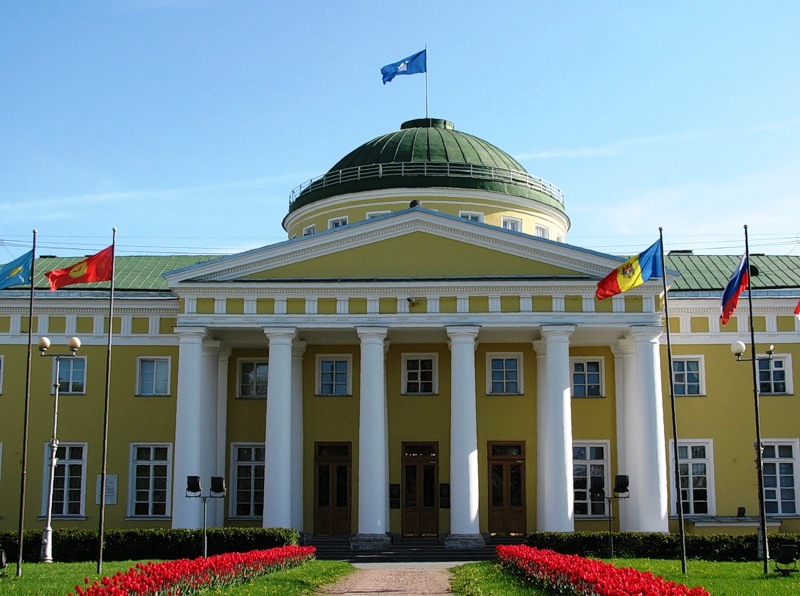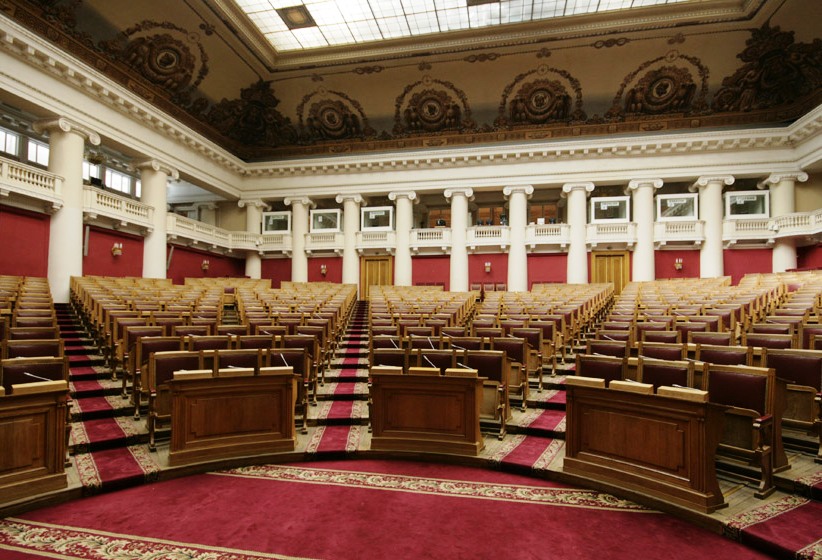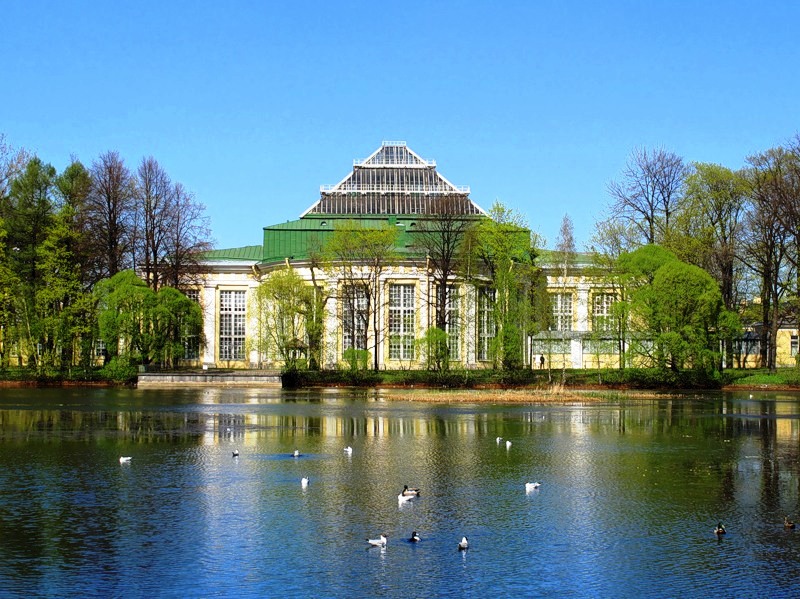|
Taurida Palace is an outstanding work of Russian
classicism of the late 18th century. It was constructed by the
project of I. Starov from 1783 till 1789
for the one of the Catherine II favorites - Count Potemkin, who was the
commander-in-chief of the Russian Army during the war for joining the Crimea to
Russia.
After conquering the lands of Tauride
(this was the name of Crimea in ancient times)
count Potemkin got the name Prince of the Tauride (hence the name of the
palace). After the death of Potemkin the palace was taken to the state treasury
and became the favorite residence of Catherine II. In 1797 by a decree of Paul
I, the property of the Tauride palace transferred in the Mikhailovsky castle,
the palace itself referred to Konnogvordeiskiy regiment. In 1801 the Tauride Palace
was restored as one of the emperors' residences.
Until the beginning of the 20th century the palace remained uninhabited, and
since 1906 up to February 1917 the Taurida palace was the seat of the State
Duma, the Russian Parliament, introduced by Nicholas II in 1906. Nowadays the
Taurida palace houses the Higher
School for party
functionaries, while the main hall of the palace is frequently used for
different international discussions, meetings and conferences and the
Constitutional Assemblies hold their sessions here as well. It is worth paying
attention that the palace is surrounded by the picturesque garden designed by
the English gardener, William Gould. During the Siege of Leningrad the park was
damaged, but it was restored and nowadays it is a source of recreation.
|





